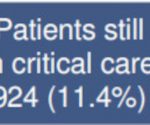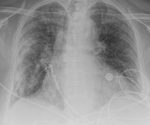SARS-COV-2 doesn’t exist, but don’t take anyone else’s word for it
This is an article that is long overdue, and it is much needed. Although some good coverage of the subject at hand has been created by a number of researchers, a central truth of the matter is rarely plainly stated. SARS-COV-2, the virus that is supposed to be the causal agent of Covid-19, has not been proven to exist. The reader is more likely to have seen the fact expressed in terms of something called Koch’s Postulates, and in particular the third of these, and that SARS-COV-2 does not satisfy a simple criteria for proof.
A piece appearing at the Off-Guardian site and written by Amory Devereux and Rosemary Frei is a great starting point for a layman who wants to try and find proof of SARS-COV-2 – because this is the challenge, in fact, that FBEL is setting its readership. On publication date 9th June, Devereux and Frei made the following statement:
We’ve scoured the internet and found no proof that scientists have done the simple steps required to demonstrate that SARS-CoV-2 conclusively meets even one – never mind all — of the third postulate’s constituent parts.
Devereux and Frei’s, then, is a relatively up-to-date inventory report regarding the state of the world wide web and it being devoid of proof of SARS-COV-2. The co-writers do provide a number of examples where there is a claim of achievement, but also in each case point out that in fact Koch’s Postulates have not been fulfilled. Because we shouldn’t take anyone else’s word for truth in any matter, not least one that is as important as this, we should endeavour to seek out other material than that which is cited by Devereux and Frei. And having read their piece, we are better equipped to examine any online academic material we might come across that declares that SARS-COV-2 has been isolated.
As the reader will come to appreciate, if he doesn’t already know, isolation and manipulation of the virus is actually at the core of the issue, and that in fact there can be no validation if there is no purification. However, in a slightly fuller explanation, the third postulate of Koch involves separating the virus from the cell that is hosting it (the cell belongs to a human carrier, of course), discerning its genetic make-up and determining if it is unique to the virus, replicating the genetic sequence into a copy of the virus, and then introducing the virus into a statistically significant number of test hosts (i.e. lab animals) to attempt to create symptoms whereby the virus can be seen to be associated with the disease.
As mentioned above, at the crux of the issue is isolation of the virus. And this is why, we might suspect, in the realm of science that is looking for proof of viruses, the term “isolation” has been imbued with significance that is counterintuitive, and even deceptive, and that will definitely present the wrong idea to a general ignoramus – which, let’s be frank, is most of the general public. As the independent researcher David Crowe, in his paper, Flaws in Coronavirus Pandemic Theory (June 6th version – please search for the pdf), writes:
…the word ‘isolation’ has been so debased by virologists it means nothing (e.g. adding impure materials to a cell culture and seeing cell death is ‘isolation’).
The reader should bear this silver bullet of information in mind when, as we are about to, examine briefly a test case of claiming isolation of SARS-COV-2.
Devereux and Frei also provide a good deal of ammunition for the seeker of SARS-COV-2 proof by explaining how claims of isolation cannot be upheld. These examples include supposed isolation of the virus from animals (when it should come from people); reliance on hearsay reports of isolation; and failure to replicate a copy of the virus. And then there is a particularly spectacular instance of the debasement of the notion of isolation as cited by David Crowe:
Reference [1] [citing Zhu N et al. A Novel Coronavirus from Patients with Pneumonia in China, 2019. N Engl J Med. 2020 Jan 14] did publish electron micrographs, but it can clearly be seen in the lesser magnified photo, that the particles believed to be COVID-19 are not purified, as the quantity of material that is cellular is much greater.
Here we have reassurance that even when electron micrographs are finally utilised to claim isolation, what it can actually merely amount to is selective viewing of the evidence.
It was hinted above that statements of the non-existence of SARS-COV-2 are couched in ways that don’t telegraph the sensational magnitude of the truth, and Crowe’s conclusion is duly understated. He says
[The coronavirus panic is] …based on an unproven RNA test, that has never been connected to a virus. And which won’t be connected to a virus unless the virus is purified.
For “unless the virus is purified”, read “the virus has not been purified”.
Armed, then, with this knowledge, anyone should be able to check the published material for proof of SARS-COV-2, and there now follows an example. On searching the internet with the pertinent terms, the author came across a paper titled, Identification of Coronavirus Isolated from a Patient in Korea with COVID-19 (Osong Public Health Res Perspect. 2020 Feb; Jeong-Min Kim, et al).
The paper claimed the following methodology:
The virus was isolated from nasopharyngeal and oropharyngeal samples from putative COVID-19 patients. Oropharyngeal samples were diluted with viral transfer medium containing nasopharyngeal swabs and antibiotics (Nystadin, penicillin-streptomycin 1:1 dilution) at 1:4 ratio and incubated for 1 hour at 4°C, before being inoculated onto Vero cells… Virus replication and isolation were confirmed through cytopathic effects, gene detection, and electron microscopy.
This appears to say that the virus was observed through the medium of the Vero cells that were infected with it. And indeed, images inserted in the paper are ones of Vero cells. The problem must be obvious: there is no proof that the Vero cells were inoculated with SARS-COV-2. The author understands it to be the case that the particle size of a virus can be determined with electron microscopy, and it doesn’t take much imagination to understand why these researchers examined “SARS-COV-2” at the host cell level of abstraction.
If the paper tells of how samples were taken from symptomatic patients who had been determined as carriers of SARS-COV-2 by unreliable PCR test, then the problem with this is how to know we have started on the process of isolation with a sample of SARS-COV-2, especially if we don’t identify it by looking at it. Well, the paper says that:
Virus replication was confirmed using real-time RT-PCR with RNA extracted from the cell culture medium…
– or, perhaps, RNA was extracted from a jam in a Petri dish and operated on with an unreliable test. The RNA of what? Well, the paper says that:
Alignment was conducted using human and animal coronavirus sequences registered in Global Initiative on Sharing All Influenza Data (GISAID) and NCBI GenBank.
So, this appears to say that there was a comparison with genetic mapping as stored in databases. The problem with this, of course, is that if SARS-COV-2 has never been isolated, what is it exactly that is being used as an exemplar for verifying an independently produced copy?
As a matter for further discussion, the researchers in this case, on making comparisons with said databases, discovered that their coronavirus “showed high homology of > 99.5% with other isolated SARS-CoV-2 sequences.” Call the author stupid, but this appears to say that whatever was discovered was not exactly the same as a standard model – if indeed there is such a thing. That “the virus was named BetaCoV/Korea/KCDC03/2020” reinforces the notion of dissimilarity. One thing appears to be sure, this Korean coronavirus does not appear to have been tested in a living host in order to replicate symptoms of Covid-19.
More evidence that there hasn’t been isolation of a SARS-COV-2 virus that causes Covid-19 comes in the shape of the debacle that is antibody tests. In Britain these started to be deployed and sold until a moratorium was called until such time their accuracy could be determined:
The Medicines and Healthcare products Regulatory Authority has contacted all the private providers and the labs they use to tell them to halt the tests while they assess their accuracy…
PHE [Public Health England] has approved two antibody tests, by [manufacturers] Abbott and also by Roche. The Department of Health and Social Care has bought 10m for the NHS. A third test, from the Cardiff-based diagnostics company Ortho, has been approved in Wales.
This suspension was announced on May 27th, and it appears that it hasn’t been lifted yet.
Knowing that a coronavirus has never been isolated, one can perhaps have a good guess as to why antibody tests cannot detect the recent presence in a host of SARS-COV-2. In his paper, Antibody Testing for COVID-19 (May 13 version – please search for the pdf), David Crowe summarises for us:
Antibodies are our body’s immune system reaction to viral proteins, known as antigens. Antibody tests incorporate antigens, and a chemical that allows the intensity of the reaction to be measured using light. Ideally antigens would come from pure virus, but COVID-19 virus has never been purified, thus antigens are created artificially from proteins based on portions of the 30,000 base RNA genome that is believed to come from the virus.
On assimilating all the information, we can really get a picture of the ramifications of a gold standard for Covid-19 causation never having been established. Imagine there is this RNA that everyone has a matter of course in their microbiome, and perhaps people create slightly different variations in their own bodies. This material gets detected at the same time that people are suffering from a pneumonia caused by a toxic environment (see Wuhan), and so it becomes to be believed to be a virus and the causation agent for an illness. After it is analysed, as best it can be without the biological matter it comes from ever having been properly isolated, and a genetic record is placed in international databases, it becomes a model for other material to be recognised, but not precisely – only in a cluster of very alike genetic patterns. How useful this database is for recognising an antibody of a real virus is something that the author has not looked into (i.e. research needs to be done regarding the genesis of antibody tests), but by using extrapolation he is extremely doubtful.
Imagine, however, a person has an underlying cold – a real coronavirus – but he produces a false positive result for SARS-COV-2 with a PCR test, and he becomes the source of a sample that matches a cluster on an international database for SARS-COV-2, and then he becomes the source of an antibody test for Covid-19. That means that the antibodies that this particular Covid-19 test is seeking are actually those produced by something else. In that case, if a population of people who tested positive with a PCR test, but who never had the same underlying viral illness as the source patient had so that the Covid-19 antibody test didn’t register the disease with them, one would well expect medical researchers and government scientists to declare that the SARS-COV-2 antibody has an innate quality whereby it is hard to find. Lo and behold, from The Times:
The tests were bought after being evaluated by Public Health England at Porton Down, Wiltshire. However, an independent scientific evaluation of the PHE tests has raised concerns about the methods used to assess them and how well they are likely to work.
It suggests that while the tests are providing no “false positive” results, they were less good at identifying people who have had the virus.
Or, as The Sun puts it:
Negative antibody test doesn’t mean you haven’t had coronavirus, scientists reveal
Translated, this means if a test doesn’t find antibodies, but the unreliable PCR test has indicated the disease, then the subject has had the virus. (And then the The Sun goes on to give an account of how the nature of Covid-19 is such that it doesn’t necessarily trigger antibodies. How convenient).
And then there is this from the Daily Mail:
Only 10 per cent of people who are infected with the coronavirus develop antibodies, a professor claims.
Professor Karol Sikora, an advisor to the World Health Organisation, said the majority would have a negative result on an antibody test, even though they have had the coronavirus.
However, none of this is to say that a real virus – or perhaps micro-biological material should be the non-judgemental term – is not involved in real Covid-19. In support of ruling out something called SARS-COV-2 as the real cause, we are reminded that the Chinese researchers who imaged binding by a coronavirus with ACE2, as covered at FBEL previously, did not necessarily use material from SARS-COV-2, and indeed, in the context of the virus never having been isolated, presumably definitely did not.
Moreover, we do know that SARS-COV binding with ACE2 (which, when it happens at the lung and leads to pneumonia, is Covid-19) was known of in 2005, and this was after the 2002/3 emergence of that phenomenon. And now that we are questioning the existence of SARS-COV-2 as a virus, why may we not actually question its predecessor, and hypothesise that, actually, Covid-19 is caused by accident of health terrain where material inherent to the host, proteins and pathogens, is tipped into a situation of imbalance, and made to interact by any number of external sources, but chiefly, as the FBEL reader would by now expect to be proposed, prescription drugs and bungling and brutal (NHS-dispensed) allopathic medicine.
[The featured image is “Thin section electron micrographs of Vero cells infected with SARS-CoV-2” illustrating the paper by Jeong-Min Kim et al].


















